| Corcoran Technical Trading Patterns For February 5 |
| By Clive Corcoran |
Published
02/5/2009
|
Stocks
|
Unrated
|
|
|
|
Corcoran Technical Trading Patterns For February 5
The hourly chart for SPY takes a perspective on the period since the January 6 intraday high until the close of trading yesterday. As can be seen, the hourly chart was just able to retrace, during January 28's celebration of what appeared to be a concrete decision about bad banks and troubled assets, 50% of the swing high/low move.
Since that date the concreteness has turned mushy and the markets are drifting aimlessly. As is clear from the RSI chart the 70 level was exceeded on the hourly chart yesterday (also at the 38% level) and it brought about an abrupt reversal pushing the cash index back down to the 832 level.
If the markets decide that they would prefer to be ahead of what might be another nasty employment report to be released tomorrow, we could find the SPY back down near the lower values of the recent range.
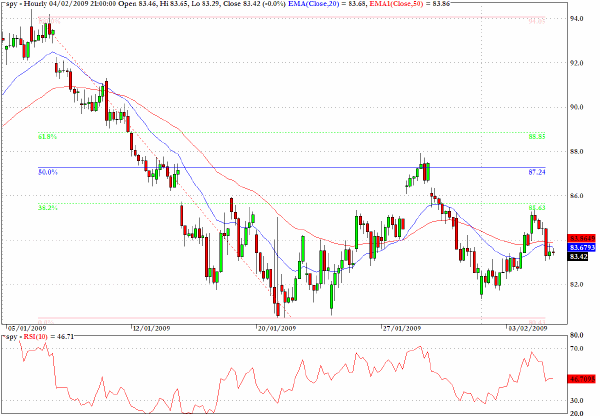
The chart below shows a similar time frame and is also a 60-minute view of the Nasdaq 100 index. This time, however, it is possible to see the relative out-performance of this index, as twice since the January 6 high the index has penetrated the 62% retracement level.
As discussed before, with the weighting of the S&P 500 now more focused on the tech sector rather than financials I find myself paying attention more closely to any signs of leadership coming from the big tech stocks. So far the jury is out on the matter but those of a bullish persuasion would be wise to monitor this index closely for signs of a sustainable rally above the 62% retracement level.
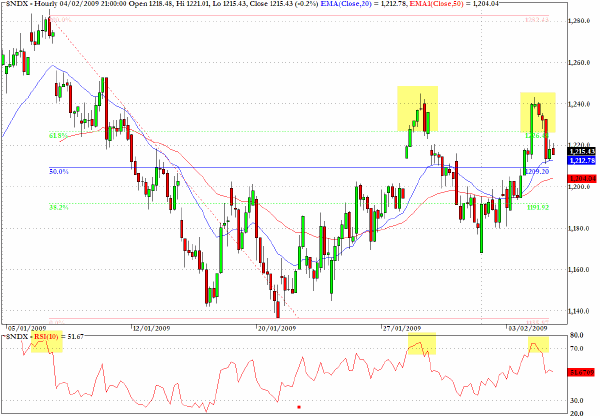
The Dow Jones Transportation (^DJT) has slipped out of the trading range indicated and appears to be struggling to regain a foothold within that band. A clear breakdown on this index could be a harbinger for the more important companion index, the Dow Jones Industrials (DJIA) which also seems to be struggling to remain above the 8000 level.
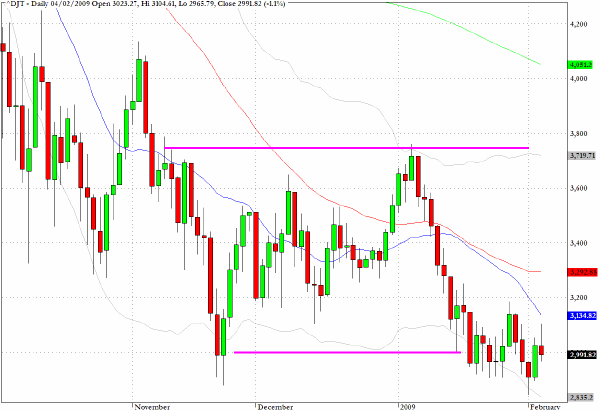
The S&P Retail Index (^RLX) has now broken below two trendlines that fan out from the November 20 low. Data to be released in the next 24 hours could also be a catalyst for further downside activity in this sector.
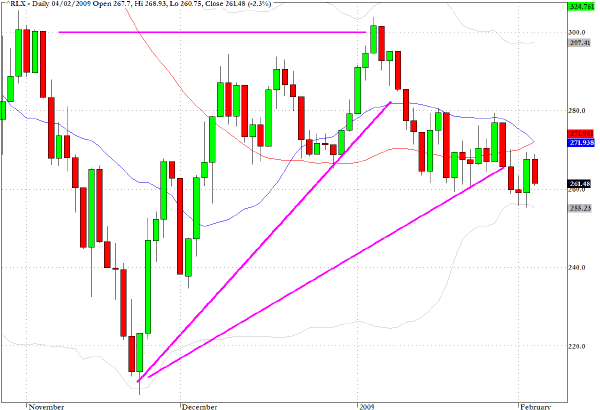
In Monday's column I noted that XLP, the sector fund for Consumer Staples, took a nasty hit on increased volume in Friday's trading.
The selling returned again in yesterday's session and underlines the fact that, despite this being considered a relatively defensive sector, the very serious erosion in final demand is being fuelled by a greater propensity to save. These kinds of changes in consumer behavior can be long-lasting and require even those companies with the most reliable earnings forecasting abilities to become more cautious.
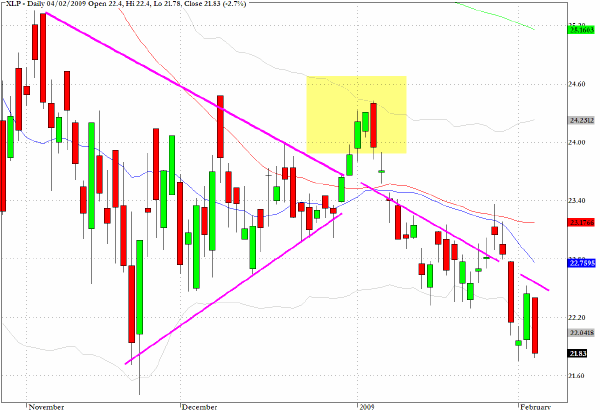
I do not pretend to be able to follow (or have the appetite for) all of the nuances that are taking place in the new Administration's stance on how to deal with the black hole on bank's balance sheets, but from a technical perspective I would strongly suggest monitoring XLF.
There is at leas the possibility with the pullback channel indicated that another strong upward move is possible if Wall Street likes an announcement when it comes. Needless to say, a bull flag failure pattern and a setback to the positive MACD scenario would not be a positive for the sector.
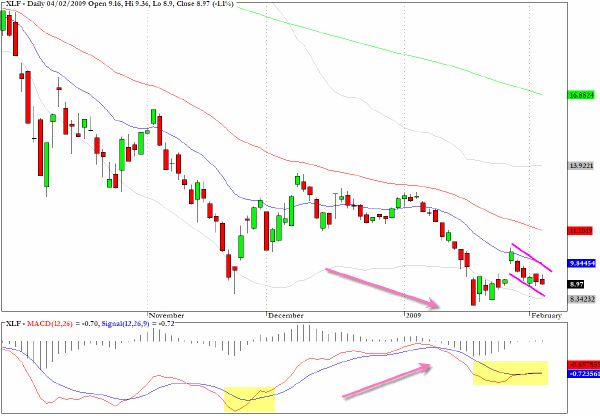
Clive Corcoran is the publisher of TradeWithForm.com, which provides daily analysis and commentary on the US stock market. He specializes in market neutral investing and and is currently working on a book about the benefits of trading with long/short strategies, which is scheduled for publication later this year.
Disclaimer
The purpose of this article is to offer you the chance to review the trading methodology, risk reduction strategies and portfolio construction techniques described at tradewithform.com. There is no guarantee that the trading strategies advocated will be profitable. Moreover, there is a risk that following these strategies will lead to loss of capital. Past results are no guarantee of future results. Trading stocks and CFD's can yield large rewards, but also has large potential risks. Trading with leverage can be especially risky. You should be fully aware of the risks of trading in the capital markets. You are strongly advised not to trade with capital.
|